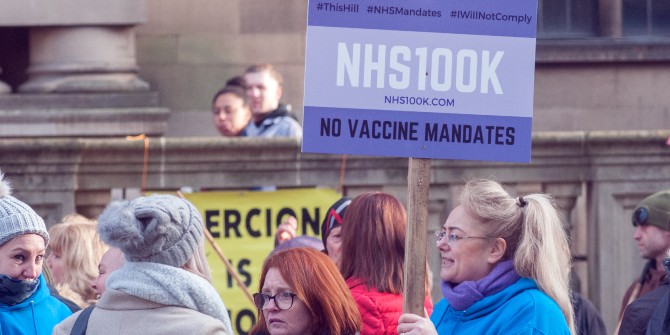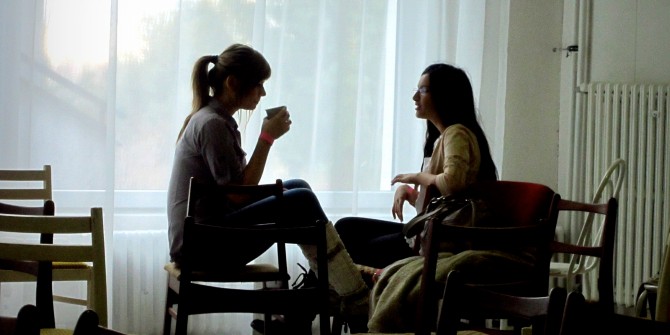While the efforts of NHS and care home staff have been widely acknowledged during the pandemic, social care personal assistants receive far less attention. Many have been forced to stop work, cut their hours, source their own PPE and negotiate difficult issues with their employers. This group is hard to reach and deserves to receive more support from local authorities, says John Woolham (King’s College London).
About a third of people who receive direct payments for their social care now employ their own staff. These personal assistants (PAs) are in the vanguard of attempts to personalise social care, and enable people to exert more choice and control over how they receive it. Most are directly employed by the person needing support or care or by their family, though some are self-employed. The direct employment relationship can enable higher standards of care and support and facilitate closer and mutually fulfilling working relationships between employer and employed. However, they are thought to be the only group of care professionals who are unregulated, and their working conditions are often problematic.

As for other frontline staff working in NHS or care settings, the pandemic has had a huge impact on PAs and their working relationship with their employers. PAs, though, face additional difficulties, as we found when we did a series of follow-up interviews with 41 of them at the height of the first wave of the pandemic last year. Fifteen (37%) of the 41 PAs were temporarily no longer working. A few were shielding themselves because of their own health or that of a family member, but most had been asked by their employer not to come to work. 32% were still working, but with fewer employers and for far fewer hours, as employers reduced all but essential contact.
This meant substantially less income for most – and some did not qualify for furlough payments. Many of those who continued working explained how they rapidly introduced new cleanliness, hygiene and distancing regimes in their employer’s home. Others described wider impacts. One PA said her husband had rejected a promotion because the new role would have increased his risk of infection, thereby exposing her and consequently her employer to infection. Working PAs could also find themselves working longer shifts as they did the work of others whose work had been suspended. Risky behaviour – usually by a member of the employer’s family – sometimes created problems. One PA asked a relative returning from a high-risk country to self-isolate, to protect the employer, but also her and her other employers. She was dismissed.
The precariousness of PAs’ working conditions was also reflected in the response of the government and local authorities to the virus. PAs were unsure if they were ‘key workers’, even though their employers depended upon them, and did not know how this status was conferred. Many spent additional unpaid hours queuing outside shops as they lacked the accreditation needed to take advantage of the dedicated shopping times many supermarkets introduced for NHS and care staff.
Many PAs also had no access to local information available to NHS and care workers about the virus, and where to access PPE. The few who did find out about NHS distribution hubs (set up to distribute PPE) found they were ineligible because they lacked accreditation. PAs also spoke of having to source and pay for the PPE they used (even when this was an employer’s responsibility) and finding it expensive as well as difficult to obtain.
Many of the problems we found in our study seemed to occur because of the ‘invisibility’ of PAs. As an unregulated group of care professionals, they are not subject to any form of independent oversight and are therefore ‘hard to reach’. Patchy local support is available, but generally only for employers.
We call for a greater role for local authority (LA) adult social care departments in identifying PAs, provision of independent information, support, access to training, and oversight of working conditions. Contingency plans for infections or other associated emergencies should be included as part of the agreement of care plans and reviews, and lodged with adult social care.
Government guidance and support during the pandemic
Guidance for direct payment users with Personal Assistants was first published in April (after our fieldwork had been completed) and last updated in November 2020. Though the title of the guidance refers to ‘guidance for people receiving direct payments and personal assistants’, the document is arguably primarily written for employers rather than PAs. Though some of it helpfully addresses the concerns raised by PAs in our report, we do not know much about its impact. Assertions made in the guidance that PAs are key workers, and that PAs and employers can obtain free PPE have not been verified. We do not know either how many PAs test their PPE using the local arrangements the guidance suggests LAs and Care Commissioning Groups (CCGs) should have in place, or if there is ‘proactive communication’ between LAs and CCGs and employers, as the guidance suggests. In any event, it is unlikely this will reach people who self-fund since no registration arrangements are in place. Because no further update has been published, no mention is made about the vaccines that are now available, and we do not know if PAs are going to be included as a priority group. More work is needed to establish how far this guidance is being implemented and used.
This post represents the views of the author and not those of the COVID-19 blog, nor LSE. The impact of the coronavirus (COVID-190 on people who work as social care assistants is published by the NIHR Policy Research Unit at King’s College London. For further information about it please contact John Woolham or Jill Manthorpe. Our next study will focus on Personal Assistant Employers – please contact us if you would like to find out more about it.
This research was funded by the National Institute for Health Research (NIHR) Policy Research Programme, through the Policy Research Unit in Health and Social Care Workforce, PR-PRU-1217-21202. The views expressed are those of the author and not necessarily those of the NIHR or the Department of Health and Social Care.





